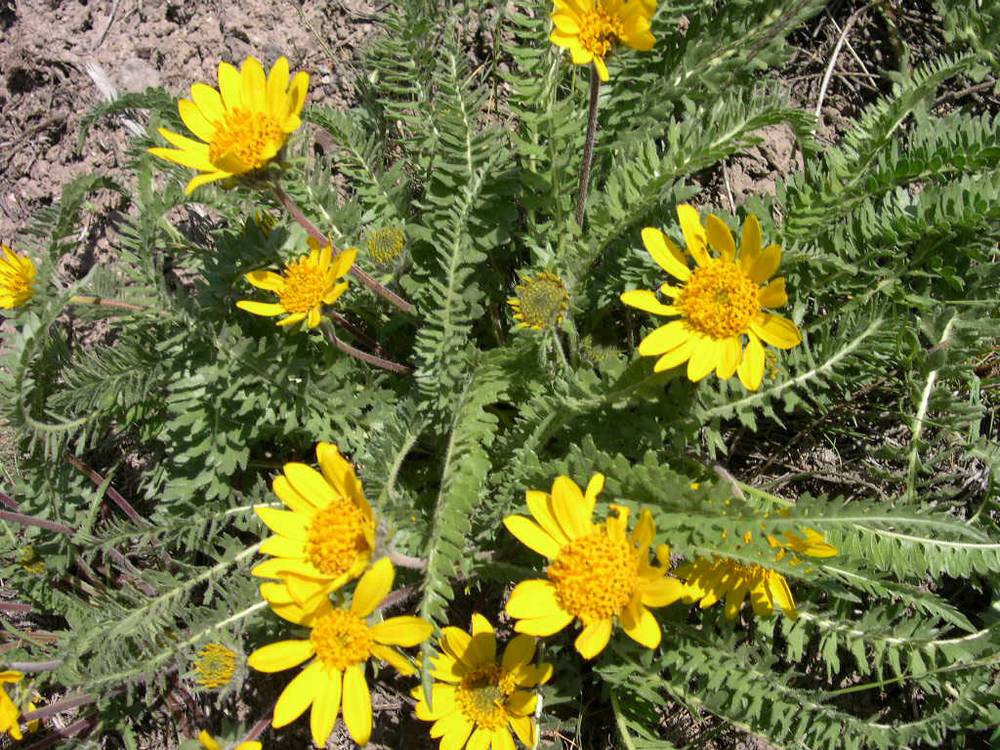Balsamorhiza hispidula
hispid balsamroot
8–25 cm, villous-hirsute; from single taproot.
ovate-lanceolate, 1-pinnately divided with pinnae again lobed, often with only a few lobes at tips or divided;
margins entire, ciliate;
surfaces hispid;
basal leaves in 1–few rosettes;
blades 5–18 × 3–7.5 cm;
pinnae 2–8 mm wide;
petioles 2–9 cm;
cauline leaves in one opposite pair;
blades 1.5–5 × 0.4–2 cm;
petioles 1.5–4 cm.
with 1 terminal head.
10–15 × 17–22 mm.
deciduous, 10–13, yellow;
rays 20–25 × 5–10 mm.
6–7 mm.
linear to lanceolate, 14–17 × 2–3 mm, with acuminate or caudate tips, ciliate, villous-hirsute.
6–7 mm, glabrous.
7–8 mm.
Balsamorhiza hispidula
Dry, often rocky, open areas. Flowering Apr–Jun. 800–1700 m. BR, BW, Owy. ID, NV; northeast to MT, east top WY, southeast to AZ. Native.
While B. hispidula is quite distinct from B. hookeri throughout most of its range, it intergrades completely with B. hookeri in Oregon. Although the two species have been kept separate in this treatment, most Oregon specimens of B. hispidula show some evidence of gene flow from B. hookeri. Balsamorhiza hispidula also hybridizes with B. sagittata. The specific epithet refers to the pubescence of the plants.
Abigail (Abby) Moore



